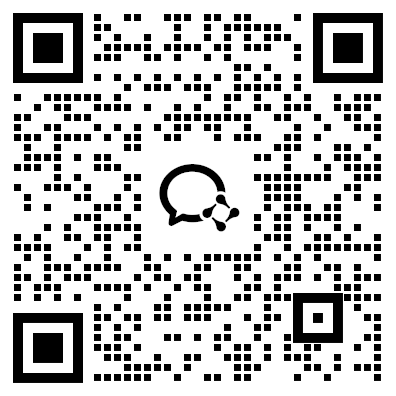

雅思备考规划
扫码添加助教免费咨询雅思备考规划

扫码下载 新东方雅思Pro APP,雅思备考一站式工具
大家在备考雅思考试的过程中可以多做雅思模拟题,了解自己的雅思水平,分析自己的薄弱项,新东方在线雅思在本文为大家带来的是雅思阅读模拟题:Quantitative Research in Education,大家可以练习练习。
Many education researchers used to work on the assumption that children experience different phases of development, and that they cannot execute the most advanced level of cognitive operation until they have reached the most advanced forms of cognitive process. For example, one researcher Piaget had a well-known experiment in which he asked the children to compare the amount of liquid in containers with different shapes. Those containers had the same capacity, but even when the young children were demonstrated that the same amount of fluid could be poured between the containers, many of them still believed one was larger than the other. Piaget concluded that the children were incapable of performing the logical task in figuring out that the two containers were the same size even though they had different shapes, because their cognitive development had not reached the necessary phase. Critics on his work, such as Donaldson, have questioned this interpretation. They point out the possibility that the children were just unwilling to play the experimenter's game, or that they did not quite understand the question asked by the experimenter. These criticisms surely do state the facts, but more importantly, it suggests that experiments are social situations where interpersonal interactions take place. The implication here is that Piaget's investigation and his attempts to replicate it are not solely about measuring the children's capabilities of logical thinking, but also the degree to which they could understand the directions for them, their willingness to comply with these requirements, how well the experimenters did in communicating the requirements and in motivating those children, etc.
The same kinds of criticisms have been targeted to psychological and educational tests. For instance, Mehan argues that the subjects might interpret the test questions in a way different from that meant by the experimenter. In a language development test, researchers show children a picture of a medieval fortress, complete with moat, drawbridge, parapets and three initial consonants in it: D, C, and G. The children are required to circle the correct initial consonant for 'castle'. The answer is C, but many kids choose D. When asked what the name of the building was, the children responded 'Disneyland'. They adopted the reasoning line expected by the experimenter but got to the wrong substantive answer. The score sheet with the wrong answers does not include in it a child's lack of reasoning capacity; it only records that the children gave a different answer rather than the one the tester expected.
Here we are constantly getting questions about how valid the measures are where the findings of the quantitative research are usually based. Some scholars such as Donaldson consider these as technical issues, which can be resolved through more rigorous experimentation. In contrast, others like Mehan reckon that the problems are not merely with particular experiments or tests, but they might legitimately jeopardise the validity of all researches of this type.
Meanwhile, there are also questions regarding the assumption in the logic of quantitative educational research that causes can be identified through physical and/or statistical manipulation of the variables. Critics argue that this does not take into consideration the nature of human social life by assuming it to be made up of static, mechanical causal relationships, while in reality, it includes complicated procedures of interpretation and negotiation, which do not come with determinate results. From this perspective, it is not clear that we can understand the pattern and mechanism behind people's behaviours simply in terms of the casual relationships, which are the focuses of quantitative research. It is implied that social life is much more contextually variable and complex.
Such criticisms of quantitative educational research have also inspired more and more educational researchers to adopt qualitative methodologies during the last three or four decades. These researchers have steered away from measuring and manipulating variables experimentally or statistically. There are many forms of qualitative research, which is loosely illustrated by terms like 'ethnography', 'case study', 'participant observation', 'life history', 'unstructured interviewing', 'discourse analysis' and so on. Generally speaking, though, it has characteristics as follows:
Qualitative researches have an intensive focus on exploring the nature of certain phenomena in the field of education, instead of setting out to test hypotheses about them. It also inclines to deal with 'unstructured data', which refers to the kind of data that have not been coded during the collection process regarding a closed set of analytical categories. As a result, when engaging in observation, qualitative researchers use audio or video devices to record what happens or write in detail open-ended field-notes, instead of coding behaviour concerning a pre-determined set of categories, which is what quantitative researchers typically would do when conducting 'systematic observation'. Similarly, in an interview, interviewers will ask open-ended questions instead of ones that require specific predefined answers of the kind typical, like in a postal questionnaire. Actually, qualitative interviews are often designed to resemble casual conversations.
The primary forms of data analysis include verbal description and explanations and involve explicit interpretations of both the meanings and functions of human behaviours. At most, quantification and statistical analysis only play a subordinate role. The sociology of education and evaluation studies were the two areas of educational research where-criticism of quantitative research and the development of qualitative methodologies initially emerged in the most intense way. A series of studies conducted by Lacey, Hargreaves and Lambert in a boys' grammar school, a boys' secondary modem school, and a girls' grammar school in Britain in the 1960s marked the beginning of the trend towards qualitative research in the sociology of education. Researchers employed an ethnographic or participant observation approach, although they did also collect some quantitative data, for instance on friendship patterns among the students. These researchers observed lessons, interviewed both the teachers and the students, and made the most of school records. They studied the schools for a considerable amount of time and spent plenty of months gathering data and tracking changes over all these years.
Questions 28-32
Look at the following statements or descriptions (Questions 28-32) and the list of people below. Match each statement or description with the correct person or people, A, B, C or D
Write the correct letter, A, B, C or D, in boxes 28-32 on your answer sheet. NB You may use any letter more than once.
Lists of People
A Piaget
B Mehan
C Donaldson
D Lacey, Hargreaves and Lambert
28________ A wrong answer indicates more of a child's different perspective than incompetence in reasoning.
29________ Logical reasoning involving in the experiment is beyond children's cognitive development. 30 Children's reluctance to comply with the game rules or miscommunication may be another explanation.
31________ There is evidence of a scientific observation approach to research.
32________ There is a flawed detail in experiments on children's language development.
Questions 33-36
Complete the sentences below.
Choose NO MORE THAN TWO WORDS from the passage for each answer. Write your answers in boxes 33-36 on your answer sheet.
33 In Piaget's experiment, he asked the children to distinguish the amount ________ of in different containers.
34 In response to Mehan's question, subjects are more inclined to answer with the wrong answer ''________ '' instead of the correct answer C.
35 Some people criticised the result of Piaget experiment, but Donaldson thought the flaw could be rectified by ________
36 Most qualitative research conducted by Lacey, Hargreaves and Lambert was done in a ________
Questions 37-39
Choose THREE letters, A-F.
Write the correct letters in boxes 37-39 on your answer sheet. The list below includes characteristics of the 'qualitative research'. Which THREE are mentioned by the writer of the passage?
A Coding behaviour in terms of a predefined set of categories
B Designing an interview as an easy conversation
C Working with well-organised data in a closed set of analytical categories
D Full of details instead of loads of data in questionnaires
E Asking to give open-ended answers in questionnaires
F Recording the researching situation and applying note-taking
Question 40
Choose the correct letter, A, B, C or D.
Write the correct letter in box 40 on your answer sheet.
40 What is the main idea of the passage?
A to prove that quantitative research is most applicable to children's education B to illustrate the society lacks of deep comprehension of educational approach
C to explain the ideas of quantitative research and the characteristics of the related criticisms D to imply qualitative research is a flawless method compared with quantitative one
Answer keys
28 D
29 A
30 C
31 D
32 B
33 liquid
34 Disneyland
35 rigorous experimentation
36 grammar school
37-39 BDE
40 C

 资料下载
资料下载
雅思写作高频词汇PDF下载
发布时间:2023-08-26添加新东方在线雅思助教号
回复【200】获取
590组雅思阅读写作必背短语PDF版下载
发布时间:2023-08-09添加新东方在线雅思助教号
回复【590】获取
雅思学术词汇搭配表PDF版下载
发布时间:2023-08-04添加新东方在线雅思助教号
回复【ACL】获取
雅思口语part3结构策略PDF版下载
发布时间:2023-08-04添加新东方在线雅思助教号
回复【Part3】获取
雅思听力高频场景词PDF版下载
发布时间:2023-08-09添加新东方在线雅思助教号
回复【高频词】获取
雅思口语Part2答案示范15篇PDF下载
发布时间:2023-07-26添加新东方在线雅思助教号
回复【P2】获取
雅思小作文35组必备表达PDF下载
发布时间:2023-07-26添加新东方在线雅思助教号
回复【35】获取
雅思阅读高频短语PDF下载
发布时间:2023-07-20添加新东方在线雅思助教号
回复【短语】获取
200组雅思写作高频词汇PDF下载
发布时间:2023-07-20添加新东方在线雅思助教号
回复【200】获取
雅思写作话题词汇PDF下载
发布时间:2023-07-16添加新东方在线雅思助教号
回复【话题】获取
50组雅思口语同义替换词PDF下载
发布时间:2023-07-10添加新东方在线雅思助教号
回复【替换】获取
雅思写作大作文精选题目101PDF下载
发布时间:2023-07-09添加新东方在线雅思助教号
回复【101】获取
雅思口语核心300词PDF下载
发布时间:2023-06-23添加新东方在线雅思助教号
回复【300】获取
雅思阅读分类词汇PDF下载
发布时间:2023-06-17添加新东方在线雅思助教号
回复【分类词】获取
雅思口语必备习语PDF下载
发布时间:2023-06-17添加新东方在线雅思助教号
回复【习语】获取
雅思小作文常用词汇66词PDF下载
发布时间:2023-06-16添加新东方在线雅思助教号
回复【66】获取
雅思口语常见功能结构109句PDF下载
发布时间:2023-06-08添加新东方在线雅思助教号
回复【109】获取
10年雅思写作题库PDF下载
发布时间:2023-06-08添加新东方在线雅思助教号
回复【写作话题】获取
雅思图表作文精选套句50句PDF下载
发布时间:2023-05-28添加新东方在线雅思助教号
回复【50】获取
雅思写作99组高频词汇PDF资料
发布时间:2023-05-28添加新东方在线雅思助教号
回复【99】获取
2023年5月雅思口语新题题库PDF版本
发布时间:2023-05-14添加新东方在线雅思助教号
回复【新题】获取
2023年5-8月雅思口语新题题库与解析PDF版本
发布时间:2023-05-06关注新东方在线考雅课程中心服务号
回复【新题】获取
雅思听力考点词汇PDF资料
发布时间:2023-04-27添加新东方在线雅思助教号
回复【考点词】获取
雅思听力机经词汇PDF资料
发布时间:2023-04-24添加新东方在线雅思助教号
回复【TL】获取
雅思口语Part1常见话题语料库PDF资料
发布时间:2023-04-20添加新东方在线雅思助教号
回复【Part1】获取
剑桥雅思阅读长难句50句PDF资料
发布时间:2023-04-19添加新东方在线雅思助教号
回复【长难句】获取
雅思阅读核心学术词汇表PDF资料
发布时间:2023-04-07关注新东方在线考雅课程中心服务号
回复【核心】获取
100个雅思写作观点词和替换词表达PDF资料
发布时间:2023-03-24关注新东方在线考雅课程中心服务号
回复【100】获取
雅思阅读分类词汇PDF资料
发布时间:2023-03-22关注新东方在线考雅课程中心服务号
回复【分类词】获取
雅思阅读短语PDF资料
发布时间:2023-03-08关注新东方在线考雅课程中心服务号
回复【短语】获取

添加新东方在线雅思助教,
回复【口语】获取雅思口语资料大礼包

 推荐阅读
推荐阅读
大家在备考雅思考试的过程中可以多做雅思模拟题,了解自己的雅思水平,分析自己的薄弱项,新东方在线雅思在本文为大家带来的是雅思阅读模拟题:Texting the Television,大家可以练习练习。
大家在备考雅思考试的过程中可以多做雅思模拟题,了解自己的雅思水平,分析自己的薄弱项,新东方在线雅思在本文为大家带来的是雅思阅读模拟题:Sand Dunes,大家可以练习练习。
大家在备考雅思考试的过程中可以多做雅思模拟题,了解自己的雅思水平,分析自己的薄弱项,新东方在线雅思在本文为大家带来的是雅思阅读模拟题:The Concept of Childhood in the Western Countries,大家可以练习练习。
大家在备考雅思考试的过程中可以多做雅思模拟题,了解自己的雅思水平,分析自己的薄弱项,新东方在线雅思在本文为大家带来的是雅思阅读模拟题:Robert Louis Stevenson,大家可以练习练习。
大家在备考雅思考试的过程中可以多做雅思模拟题,了解自己的雅思水平,分析自己的薄弱项,新东方在线雅思在本文为大家带来的是雅思阅读模拟题:Revolutions in Mapping,大家可以练习练习。










 资料下载
资料下载
添加新东方在线雅思助教号
回复【单词卡】获取
添加新东方在线雅思助教号
回复【200】获取
添加新东方在线雅思助教号
回复【590】获取
添加新东方在线雅思助教号
回复【ACL】获取
添加新东方在线雅思助教号
回复【Part3】获取
添加新东方在线雅思助教号
回复【高频词】获取
添加新东方在线雅思助教号
回复【P2】获取
添加新东方在线雅思助教号
回复【35】获取
添加新东方在线雅思助教号
回复【短语】获取
添加新东方在线雅思助教号
回复【200】获取
添加新东方在线雅思助教号
回复【话题】获取
添加新东方在线雅思助教号
回复【替换】获取
添加新东方在线雅思助教号
回复【101】获取
添加新东方在线雅思助教号
回复【300】获取
添加新东方在线雅思助教号
回复【分类词】获取
添加新东方在线雅思助教号
回复【习语】获取
添加新东方在线雅思助教号
回复【66】获取
添加新东方在线雅思助教号
回复【109】获取
添加新东方在线雅思助教号
回复【写作话题】获取
添加新东方在线雅思助教号
回复【50】获取
添加新东方在线雅思助教号
回复【99】获取
添加新东方在线雅思助教号
回复【新题】获取
关注新东方在线考雅课程中心服务号
回复【新题】获取
添加新东方在线雅思助教号
回复【考点词】获取
添加新东方在线雅思助教号
回复【TL】获取
添加新东方在线雅思助教号
回复【Part1】获取
添加新东方在线雅思助教号
回复【长难句】获取
关注新东方在线考雅课程中心服务号
回复【核心】获取
关注新东方在线考雅课程中心服务号
回复【100】获取
关注新东方在线考雅课程中心服务号
回复【分类词】获取

 编辑推荐
编辑推荐
 雅思新题
雅思新题
 阅读排行榜
阅读排行榜
 相关内容
相关内容